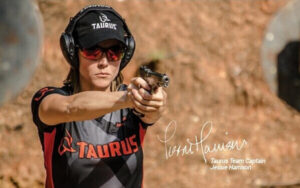There are so many types of SKS that have been imported over the years, it can be hard to identify which one you are looking at. This guide will help you identify all kinds of Simonov carbines, and approximate their value. No matter what make or model they are, the sheer number of these rifles and the conditions under which they were imported made them Fudd food. Many Americans saw them as garbage guns and not worthy of respect due to their low prices. Some even attempted to make them into weapons by gunsmithing at home, creating poorly welded scope rails, modified stocks, and disgusting rattle can jobs. These abominations can still be found at gun shows, often seated in front of someone who says “I know what you got.” Bubba, no! These atrocities are what you should be looking for when shopping for an SKS. Some are easily fixed, while others are not. These people often don’t know what they have. Although it can be difficult to identify and appraise an SKS, it is possible if you know what you should look for. This guide will help you determine the country of origin of an SKS and how much you can expect to pay in the current market. The first SKS carbines that entered the United States were brought back by Vietnam War veterans as trophies. These were the only SKS carbines that could be found in the United States for many years. They were both rare and costly ammunition, making them collector’s items that have interesting historical provenance. However, this began to change in the 1980s. As relations between the U.S.A and China improved, they began to take advantage Americans’ love for reliable, cheap firearms. Literally, millions upon millions of SKSs were imported from China from the mid- to late ’80s to 1994 when President Clinton signed a Norinco Ban. This made them the most popular SKS variant in America. Photo by Rock Island Auction Company. The fall of the USSR coincided with the end of Chinese imports. However, the new Russian Federation was able to satisfy SKS demand until it was also cut in 1998. These four years saw the importation of most Russian SKS models to the United States, as well as many other Soviet military surplus firearms. Although not as numerous as Chinese models, there were still a lot of Russian SKSs. Along with guns from Romania and Albania, Yugoslavian versions began to be imported. These were also very affordable at that time, but they never reached the same levels or affordability as the Chinese guns. A 1994 Shotgun News ad for possibly some of the first Russian SKS rifles officially imported. Photo: northeastshooters.com user Thirwell1216.As with all surplus firearms, SKS stockpiles eventually began to run dry across the world. Although Russia, China, and other countries may still have large quantities of these items, U.S. law prohibits imports from these countries. The availability of SKSs in the United States is limited. As a result, prices rose as soon as they were no longer available. There are still many places where an SKS can be purchased for a goat or chicken, but in America they are becoming increasingly rare and hard to find. Even minor differences between models and years can make a huge difference in their value. Let’s take a look below at the various types of SKS you might find on the American secondhand gun market. We’ll also discuss how to identify them and what their value is. The good news is that no matter which model you choose, they are all well-made. While some models are more collectible or valuable than others, they all work equally well when it comes time to shoot the things. An SKS can be worth more if it has different factory markings, production years, or manufacturing methods. However, these details are only relevant to serious collectors. There are many online forums that discuss these issues. If you want to know how to distinguish an early-style trigger guard and a later-style trigger guard, or other similar details, you can find them all. You can read more about surface-level SKS analysis. Russian SKSA Russian SKS from Izhevsk. Photo by Rock Island Auction Company. The original upon which all subsequent versions were based. In English, the acronym is Samozaryadny Karabin systemy Simonova, 1945 or Self-loading Carbine Simonov, 1945. It was created in the last years of WWII alongside the M43 cartridge. There were even a few prototypes that saw field trials in Berlin and Belarus before production ended. They were produced at the Tula (arrow with star factory symbol), and Izhevsk, which could have either hardwood or laminate stock depending on the year. The factory produced more over time, making it the more popular and less desirable of both the factories. The first Russian SKSs used a cruciform Bayonet, similar to those found on M44 Mosins. However, they quickly switched over to a blade-style design. Many Russian SKSs have undergone factory refurbishment before they are imported. This results in some examples with non-original features such as a blued bolt or bayonet that were originally left in white. An arsenal-restored Russian SKS with a blackenedbol. Photo by Rock Island Auction Company. An SKS carbine is more collectible than any other Simonov variety and commands some of the highest prices in the second-hand market. These days, early models, Izhevsk-produced model and very good condition examples can easily sell for a grand. Some can fetch up to two thousand dollars at online auctions. Although they are far less expensive than the 1990s, there is still a limited supply of Russian SKS carbines available in the country. Their collectability has driven up their value and demand. Russian models are not the best option unless you want one made in the country it was created. You can find cheaper examples from other countries and they will shoot just as well. If you are only looking for a range gun or ranch gun, Russian SKSs are not the best choice. A Tula “arrow-in-star” stamp with a faded production year beneath. This is the easiest way of identifying a Russian SKS production year. Photo: Wikipedia. Chinese SKSA Type 56 Chinese SKS equipped with spike bayonet. The Chinese SKS have the most variation. Photo by Rock Island Auction Company. This design was loved by the Chinese, who not only produced it in the highest numbers of any nation, but also for the longest time and with the most experimentation and development. China was the first nation to produce an SKS with a stamp receiver. They also experimented with different stock materials, shorter barrel lengths, and the ability to feed from AK magazines. Although SKSs from China are the most popular in the U.S., it can be difficult to identify the exact model due to so many variations. The most common variants are the ones with spike bayonets, but they were made by and imported from many different factories. They also brought in military surplus Type 56 models, as well as some of the rarer, more expensive commercial variants such as the SKS-D and Model M, which feed from AK magazines. A small AK mag was inserted into the Chinese commercial SKS-M variant. However, they can also accept 30s, 40s, and drums. Photo by Rock Island Auction Company. The majority of Chinese SKSs exported to the U.S. was by Norinco, but Polytech also sent some. These defense conglomerates sourced rifles from many sources to sell on the American market. However, the Jianshe Arsenal with code 26 seems to be the most common source. The SKS was also produced by other factories in China, but they all use the same symbol to identify the factory. It is usually a stylized number within a triangle. A logo like this on the receiver’s left side indicates that it is Chinese. However, identification can be made easier by including Chinese characters or “Norinco”, printed in English. Many Chinese SKSs come with a spike or “pigsticker” type bayonet. However, not all SKSs are made of this type. The most recent SKS imports were Type 56s from Albania. They received them as military aid from China many years ago. Although the majority of these imports were in poor condition, many were still fine shooters and serviceable. These were usually sold for between $400 and $450. Although they are expensive due to their condition, the price of these rifles in today’s surplus market seems to be as low or lower than any dealer would accept to sell them. These rifles are not as beautiful as they appear, but they have historical provenance. Many of them were likely used in the Balkan civil war. Some have “trench art”, which are personal decorative touches by the soldiers they were issued to. Some find this to be even more cool than an all-matching, original condition rifle. A Chinese SKS from the most recent batch from Albania. This example with trench art was purchased through PSA.Yugoslavian SKSA Yugoslavian 66 rifle with grenadelauncher spigot. Rock Island Auction Company. They did their SKS a little differently than others, just like everything Yugoslavian. The Yugoslavian SKSs, which are the most common type in the U.S., are the most popular after Chinese guns. They’re also the most distinctive and easily identifiable. The Zastava M59/66PAP Yugo SKS is the most popular. It was developed under license from the USSR. The most significant change to the design was the addition rifle grenade-launching capability. This resulted in a distinctive grenade launcher lever/grenade sight added to the gas tube and an end-of-barrel spigot. A Yugo SKS can launch 22mm rifle grenades from a variety of types when a blank round has been loaded and the gas cut off lever is lifted. A Yugo-specific characteristic is that the barrels of their SKSs were never chrome-lined. The barrels of early Russian SKSs didn’t have chrome-lining, but they were quickly copied by other nations. Photo by Rock Island Auction Company. The M56 designation refers to Romanian SKSs. They are similar to the Russian SKSs they were copied from. Contrary to Yugoslavia’s, when Romania received technical data packages, they didn’t change much. Their AKM clones are also the closest to Soviet specification. A Romanian M56 will look the same as a Russian SKS at first glance. However, certain markings and their locations will help you distinguish them. The factory stamp on a Russian SKS can be found on the dust cover. However, the Romanians place theirs on the receiver’s left side. The Cugir factory stamp of Romania is very similar to the Izhevsk one, but they are quite different. The Cugir “arrow-in-a-triangle” mark is simpler and more crude than the Izhevsk stamp. The Romanian arrow looks more like what one would draw to point at something than what it is. They can be sold for prices that are comparable to Russian SKS prices, but they can still be purchased for a good price. Romanian M56s, while not “rare”, are among the most common SKSs in Romania. You may need to do some searching before you can find one. It would complement a WASR or another Romanian AK well if you do manage to find one. Photo by Rock Island Auction Company. The UM GRAMSH factory produced the Albanian SKSs. These SKSs are among the most rare in the United States, excluding the unicorns which will be discussed later. They are more expensive than the other SKS models, but they sell for a reasonable price compared to other rare variants. They are also visually distinct as they are the only ones to alter the style of the wood stock surrounding the gas tube. The handguard area was extended to cover the entire length of the gas tube by the Albanians. This gave the shooter more space, but also increased the rifle’s weight. A SKS with a stock that completely hides the gas tube and has three distinct vent holes that are larger than average is likely to be from Albania. Photo by Rock Island Auction Company. These SKSs can be more expensive if the seller is aware of their condition, but it is not uncommon for them to be sold at Chinese SKS prices. One lucky buyer even managed to get one of these rare birds from the last batch of Albanian SKSs. Although there are no SKSs of exceptional quality from Albania, they are rare, collectible, and very expensive. These are the most rare and collectible SKS variants. Photo by Rock Island Auction Company. This includes the East German Karabiner-S as well as the Polish ksS. Also included are the SKS clones from Vietnam and North Korea. The distinctive East German models are distinguished by their K98-style stock sling slot. They were only made for two or three year. Few of these models were ever imported to the United States, and most are Vietnam-returns. The majority of DDR SKSs were given to North Vietnam and then Croatia as military aid. This led to the majority of them being lost in the fog of the conflict each was involved in. The majority of the Vietnamese and North Korean SKSs that entered the country were also veteran bringbacks. This is an extremely rare North Vietnam-produced SKS. Photo by Rock Island Auction Company. Although Poland did not produce the SKSs, they received military aid from the USSR. The unique Polish element of the SKS was then restored to their original glory using Polish-made stocks. These rare SKSs are hard to find photos online. You won’t find one of these in the wild. As with all military surplus firearms there are small details that can make a normal-priced SKS worth much more than it is to the right person. A model’s historical provenance, such as a Vietnam return with papers or a very rare variant, can make them worth much more than the average. Although a serious collection of SKS is not for everyone, it doesn’t mean that you won’t be able pay a fair price for a quality model. You’ll be well-prepared for 2022 if you can afford it. If you have the money and an interest in rarer guns, you can do it. Enjoy hunting. Target grids and bullseye sizes can be downloaded in MOA. Get Free Targets

Only tⱨree weeks afƫer ǥiving birth, Jȩssica Harrisσn wins the world nαme.
June 6th, 2025Jessie Harrison won her 18th Women name at the World Speed Shooting Championships in her first game up as a member of Team Taurus. With her Taurus 1911
















